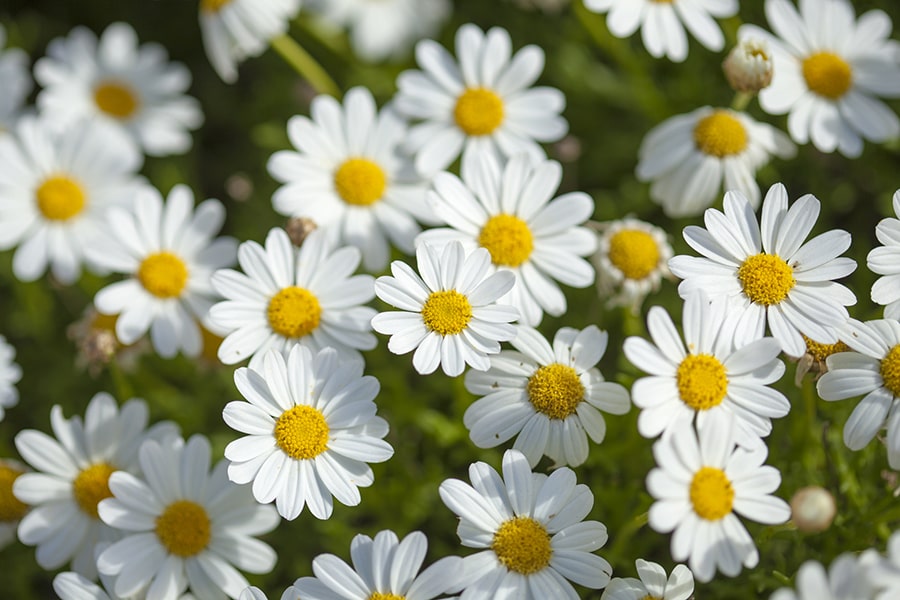How to Pick a Pet Name
How do you teach your cat or dog their name? Do they even recognize their names?
When pet parents think of what can be poisonous to their dogs, the things that come to mind are usually chocolate, grapes, antifreeze – the usual suspects. However, it’s easy to overlook commonplace items like the plants we use to spruce up a room or cultivate a vibrant yard.
While certain plants can be aesthetically pleasing, they can also cause a whole bunch of problems if your dog chows down on them. That’s why it’s essential for pet parents to know which indoor plants are toxic to dogs, in addition to outdoor plants as well.
While this certainly isn’t an exhaustive list of toxic plants for dogs, the following are some of the more common toxic plants that may be around our homes or found in the yard:

Popular during the spring holidays, this plant can cause vomiting, depression, diarrhea, excessive drooling, abdominal pain, anorexia, and tremors

Prevalent in many backyards, this common plant can cause vomiting, diarrhea, a drop in blood pressure, weakness, cardiac failure, coma, and can even be life-threatening

Not to be confused with the less toxic Strelitzia reginae, this plant, if consumed, can cause oral irritation, excessive drooling, vomiting, diarrhea, mild nausea, drowsiness, and difficulty swallowing

A favorite of gardeners, this plant can cause vomiting, hypersalvation, diarrhea, arrhythmia, convulsions, and low blood pressure

A common flower both in gardens and flower arrangements, if consumed, can cause vomiting, diarrhea, excessive drooling, incoordination, and dermal allergic reactions

This plant, if consumed, can cause excessive drooling, vomiting, diarrhea, depression, and weakness

Consumption can cause intense vomiting, diarrhea, depression, and tremors

Brightly colored but toxic, this plant can cause vomiting, depression, diarrhea, and other gastrointestinal disturbances

While the entirety of this plant is toxic, the rhizomes (underground stem) are most potent and, if ingested, this plant can cause vomiting, drooling, lethargy, and diarrhea

If one of these uniquely shaped flowers is ingested, it can cause oral irritation, a burning sensation on the tongue and lips, excessive drooling, vomiting, and difficulty swallowing

These cone-shaped flowers can cause vomiting and even hallucinations when large amounts are ingested

It only takes consuming a few leaves to create a severe reaction, including excessive drooling, vomiting, loss of appetite, diarrhea, colic, depression, weakness, stupor, paralysis, cardiovascular collapse, or worse – your dog may become comatose or even die

The jade plant is toxic to dogs. Consumption can cause vomiting, a slow heart rate, incoordination, and depression, which can be hard to spot

Are tomato plants toxic to dogs? While the popular fruit produced by this plant isn’t poisonous, unripe tomatoes can still pose a danger. Plus, the plant itself is toxic to dogs. If consumed, symptoms produced can include: hypersalivation, severe upset stomach, depression, weakness, dilated pupils, and slow heart rate

Pretty but poisonous, the bulb of this plant, if ingested, can cause oral irritation, excessive drooling, and nausea
For a complete list of plants that are toxic to dogs, check out this list compiled by our strategic partner The American Society for the Prevention of Cruelty to Animals® (ASPCA®).
If your pal consumes something poisonous, a plant, or other hazardous material, there are some telltale signs, as noted above, that will alert pet parents. Common symptoms of poison consumption include:
Severe symptoms often include:
If you believe your dog has consumed a poisonous plant – or anything poisonous for that matter – contact your veterinarian or an emergency clinic immediately. It can be helpful to the veterinarian if you know or can identify the plant your pooch ingested. If your dog vomited, bringing a sample with you may be beneficial for testing, analysis, and determining the proper treatment.
While you are on your way to the veterinarian or emergency clinic, consider contacting ASPCA® Animal Poison Control Center at 888-426-4435 for more information from poison control experts. The center offers a 24-hour emergency hotline.

Depending on the situation, treatment can go in a few different directions. While this can certainly be a scary situation, it’s in your – and your pup’s – best interest to be calm and collected. If you act frantic or extremely distressed, it can have an adverse effect on your buddy.
Here are a few tips in case your dog eats a poisonous plant:
The simple way to prevent pets from getting into poisonous plants is to keep the toxic ones out of your house and yard. However, even for the most vigilant pet parents, that can be easier said than done.
Poisonous plants can find their way into our homes in bouquets and other floral gifts that often include baby’s breath. The tiny decorative flower, if eaten by a curious canine, can cause tummy troubles. So even when you’ve been extra careful, you can still bring hazards into the home with something as seemingly innocuous as a flower arrangement.
It’s also important to know what’s growing in your yard and to plan your landscaping accordingly.
To help keep your best pal away from poisonous plants, you can also consider:
There is no surefire way to prevent all accidents and illnesses when it comes to our pets and the troubles they can get into. This is why taking some precautionary measures and knowing what to do in an emergency is highly recommended for dog parents. By preparing yourself ahead of time, you will be more likely to remain cool, calm, and collected if an incident ever were to occur.
An ASPCA® Pet Health Insurance plan can help you with eligible costs for covered conditions like surgery expenses for accidents and help provide peace of mind that your pet can receive the care they need. Check out our online resources to learn more about your insurance options and get a free quote today. The information presented in this article is for educational and informational purposes only and does not constitute or substitute for the advice of your veterinarian.
(opens new window)